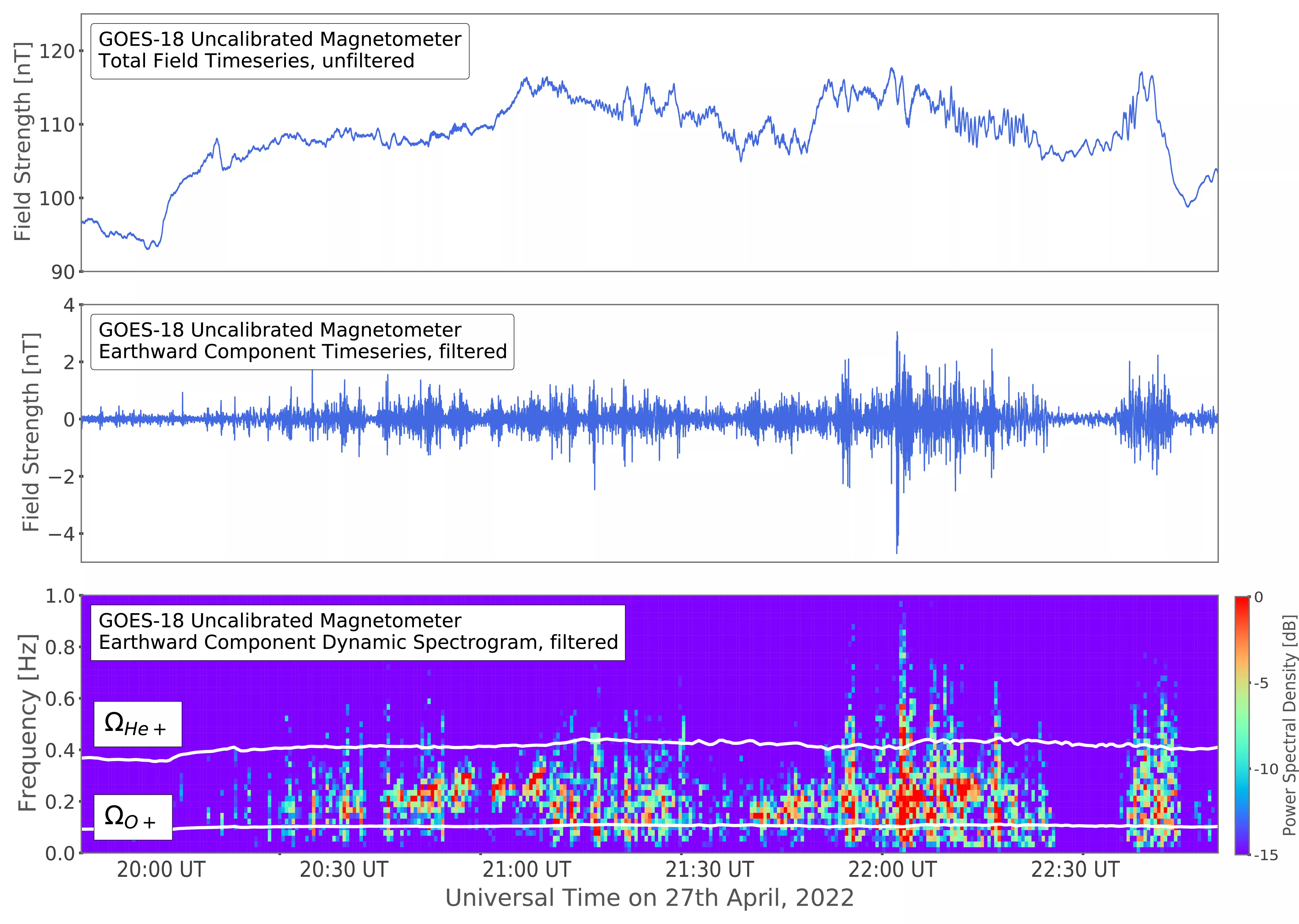The Goddard Magnetometer (GMAG) instrument, launched aboard NOAA’s GOES-18 satellite on March 1, 2022, is now transmitting magnetic field measurements down to Earth.

The GOES-18 GMAG is an upgraded magnetometer instrument that offers improved measurements of Earth’s magnetic field over the magnetometers on GOES-16 and GOES-17.
The figure above shows data from the GOES-18 GMAG on April 27, 2022. The top panel shows the total strength of the magnetic field and the middle panel shows the portion of the field that points towards Earth. Data in the middle panel has been filtered to highlight a space weather phenomenon known as plasma waves. These waves play a significant role in controlling the levels of dangerous energetic particles that cause damage to satellites and harm astronauts. An important characteristic of these waves is their frequency, or how fast they oscillate up and down. This is shown in the bottom panel of the figure, where higher power levels (identified by the color bar) correspond to the signal from plasma waves. An example of a plasma wave signal is shown by the two white lines in the bottom panel, which indicate the frequencies that positively charged helium and oxygen ions circle the local magnetic field.
When the plasma waves interact with the particles, some will oscillate in a way that accelerates particles to dangerous radiation levels while others oscillate at frequencies that can scatter the particles and decrease their threat. Space weather events generate both types of plasma waves, making forecasting the level of energetic particles complex.
After GOES-18 is assigned the operational role as NOAA’s GOES West satellite in early 2023, GMAG data will help NOAA’s Space Weather Prediction Center better forecast the likelihood that elevated levels of dangerous energetic particles will occur during space weather events. GMAG observations will also enable research into new space weather products.
